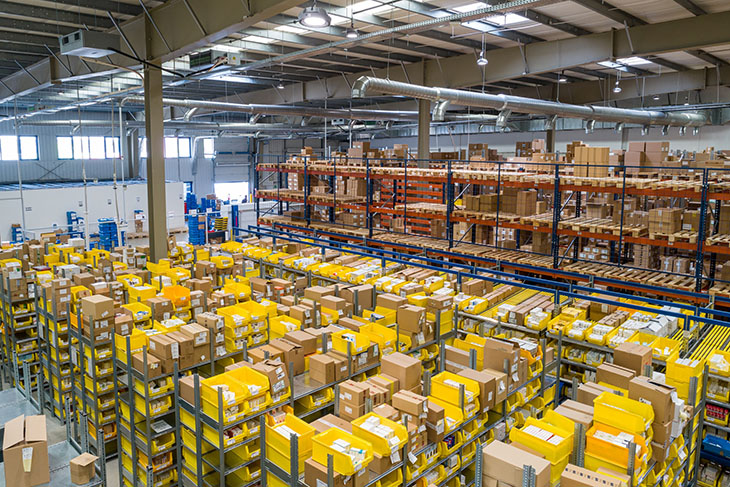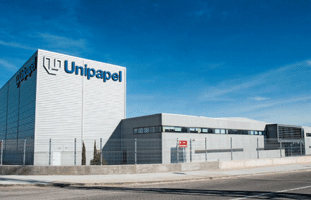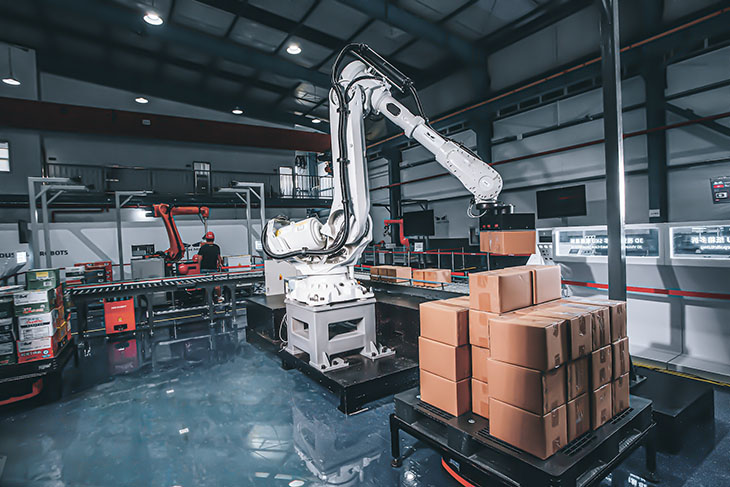Warehouses are essential to the logistics industry, but they are among the most dangerous workplaces. Amazon warehouses alone were responsible for nearly half of all workplace-related injuries in 2021.
OSHA is designed to help keep these workplaces safe. What are the most common OSHA warehouse violations, and how can employers prevent them with better safety training?
1. Forklifts and Related Hazards
OSHA violations related to forklifts are dangerously common. In 2020 – even with many warehouses shutting down operations due to the pandemic – business owners reported 78 deaths and nearly 7,300 non-fatal injuries directly related to forklifts. According to OSHA, most forklift fatalities are caused by equipment overturning.
The easiest way to reduce these risks and eliminate the chance of an OSHA violation is to train and certify all forklift operators. Pay close attention to ensure each operator is following all safety rules and regulations and is actively working to prevent accidents.
2. Hazard Communications
One often overlooked but far too common OSHA warehouse violation is the problem of hazard communication. Hazard communication includes but isn’t limited to:
- Providing specific information for any hazards an employee might face in the workplace.
- Maintaining accurate labels for any hazardous substances.
- Ensuring employees have access to applicable Material Safety Data Sheets (MSDS).
- Providing comprehensive information and better safety training to keep employees safe.
Failing on any of these points could result in an OSHA violation. Don’t skimp on your hazard communication. Make sure everyone has the training they need and keep up with your MSDS, updating them as needed.
3. Electrical Wiring
Wiring methods and any related equipment are another common reason for OSHA violations. Electrocutions are part of OSHA’s “Fatal Four” – the four most common causes of workplace fatalities.
A professional inspection may ensure your facility complies with OSHA standard 1910.305. Any new wiring or electrical components also need to be installed by an experienced and licensed electrician to prevent any issues in the future.
4. Electrical Design
Those same standards mentioned in the electrical wiring section also apply to the design of the electrical system in your facility. If you didn’t build your home base from the ground up, you might find errors that meet construction codes and standards but don’t adhere to OSHA standards. The same electrician or inspector mentioned above can help ensure your facility always complies with OSHA standards.
5. Floor and Wall Openings and Holes
Holes in the floors, openings in the walls, loading docks with open sides, and any other openings in your facility – regardless of their use – must be protected to prevent employees from falling. Warehouses often have stairways, catwalks, and other elevated structures, which also fall into this category.
In this case, the easiest way to avoid an OSHA violation is to ensure that every potential problem area has a door, guard rail, or other structure in place to keep people from getting hurt on the job.
6. Exits
Most facilities require at least two marked and accessible exits to comply with OSHA standards. However, there may be cases where more exits are necessary to accommodate facilities with more employees.
Blocking access to those exits is an easy way to secure an OSHA violation and put your employees at risk. Make sure the exits are marked and unobstructed at all times.
7. Mechanical Power Transmission
Any equipment that transmits mechanical power – belts, conveyors, etc. – must be covered by a guard to protect employees and prevent OSHA violations. This equipment can be incredibly dangerous, leading to severe injuries or even death.
Make sure all guards are in place while the equipment is in operation and include this requirement in your training. It’s a simple change that could prevent potentially devastating injuries.
8. Respiratory Protection
Any situation where an employee could be exposed to dust, chemicals, or other airborne contaminants requires respiratory protection. OSHA requires employers to provide this protection in the form of masks, respirators, or any other PPE the situation might require.
Train your teams to always utilize their PPE when encountering airborne contaminants. Ensure that all PPE is maintained and repaired or replaced as necessary.
9. Lockout/Tagout
Lockout/tagout procedures are essential to prevent employees from using equipment that may need repairs or may be offline for maintenance.
Better safety training in proper lockout/tagout procedures is essential for safe warehouse operations. Refusing to train employees on lockout/tagout procedures or not having a system for these situations will almost always result in an OSHA violation.
10. Portable Fire Extinguishers
Fire extinguishers are required in every commercial facility regardless of their industry. OSHA requires facilities to have one fire extinguisher, rated not less than 2A, for every 3,000 square feet of the facility.
You also should not have to travel more than 100 feet to reach the extinguisher from anywhere within that 3,000-square-foot area. Fire extinguishers rated 10B or more need to be within 50 feet of any flammable liquid exceeding 5 gallons or flammable gas exceeding 5 pounds.
These extinguishers must also be maintained and inspected annually to ensure they’re properly pressurized and ready for use. Everyone should be trained on how to properly use a fire extinguisher and where they are located throughout the facility.
Keeping the Warehouse Safe
Warehouse safety is an essential part of keeping these facilities running. Better safety training can prevent costly OSHA violations that could slow things down and result in reputational damage.























